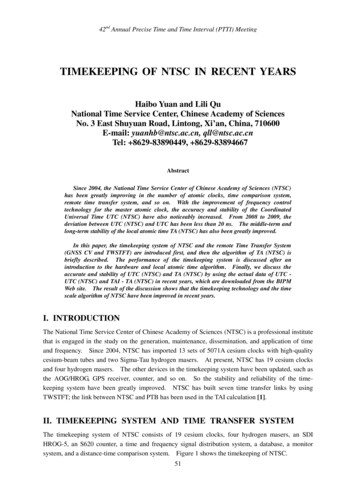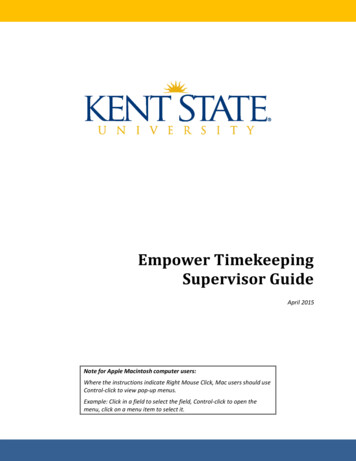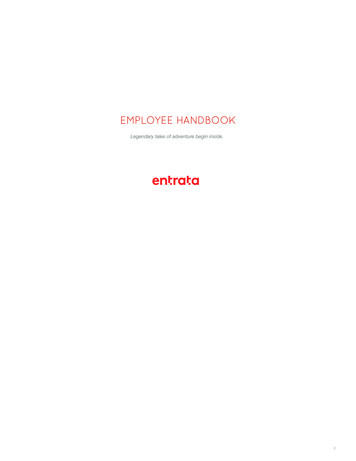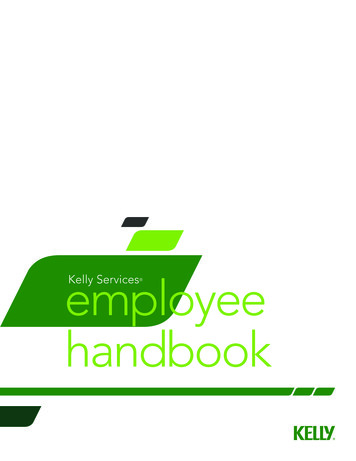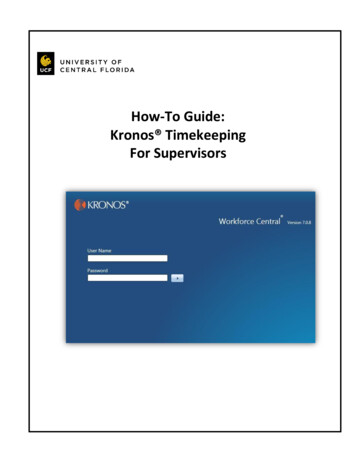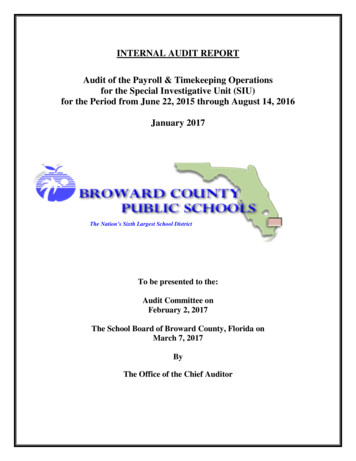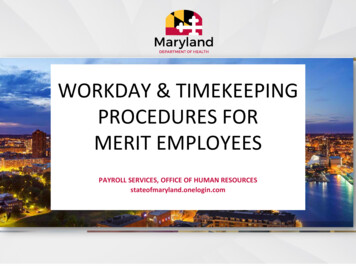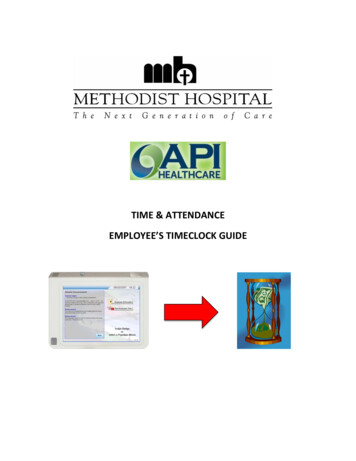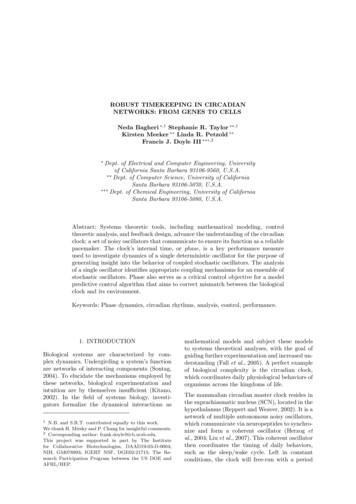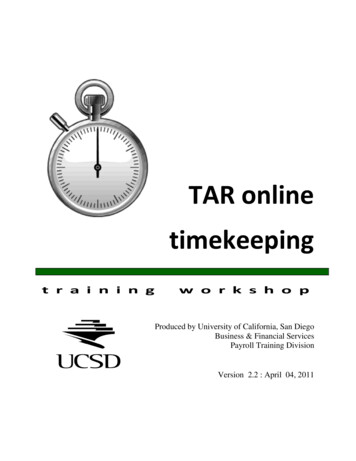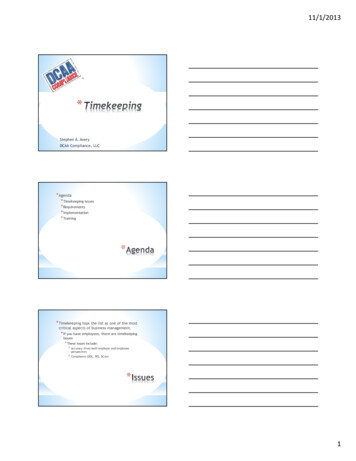
Transcription
11/1/2013TM*Stephen A. AveryDCAA Compliance, LLC* Agenda* Timekeeping Issues* Requirements* Implementation* Training** Timekeeping tops the list as one of the mostcritical aspects of business management.* If you have employees, there are timekeepingissues* These issues include:* Accuracy (from both employer and employeeperspective)* Compliance (DOL, IRS, DCAA)*1
11/1/2013* Both employers and employees are concerned aboutaccurate timekeeping. Neither wishes to feelcheated out of the work or the pay.* Good timekeeping systems should provide bothparties with some assurance as to the accuracy oftime worked.* This is also true of exempt salaried employees* Employers want to feel they are there and working* Employees want it known how hard they areworking** There are few areas of our lives more closelyregulated then labor. Laws and regulationsexist on the federal, state, and even the locallevel.* Complexity ranges from the Davis Bacon Act tolocal minimum wage and safety measures.* On the IRS side, reporting and tax treatmentsare critical considerations.** The diversity of compliance issues outside ofDCAA fall outside of the scope of thispresentation.* But .* Contractors need to be aware of all complianceissues even if DCAA is not.* An excellent example is the tax regulationsprohibiting W2 income to LLC members*2
11/1/2013** Despite the importance DCAA seems to placeon timekeeping practices, they provide theirauditors with only general guidance on whatthey want out of timekeeping practices.* Specific practices are restricted to* Manual Timesheets (CAM 509.1)* Automatic Timesheets (Cam 509.2)***3
11/1/2013*** Detailed instructions for timesheet preparationshould be established through a timekeepingmanual and/or company procedure. ThoseInstructions should indicate that the employeeis personally responsible for:* (1) Recording his/her time on a daily basis.* (2) Recording time on the timesheet** (3) The correct distribution of time by projectnumbers, contract number or name, or otheridentifiers for a particular assignment. Toensure accuracy, a listing of project numbersand their descriptions should be provided tothe employee and maintained in the workauthorization system electronically or in a hardcopy for the employee to refer to it as needed.*4
11/1/2013* (4) Changes to the timesheet. Proceduresshould be in place that identify the originaltime charge, the corrected time charge, anddocumentation from the employee indicatinghis/her concurrence with the change.** (5) Recording all hours worked whether they arepaid or not. This is necessary because labor costsand associated overheads are affected by totalhours worked, not just paid hours worked.Therefore, labor rate computations and laboroverhead costs should reflect all hours worked.Unpaid hours worked are termed "uncompensatedovertime." Solicitations over the simplifiedacquisition threshold contain the provision at FAR52.237-10, Identification of UncompensatedOvertime, which details disclosure requirements foruncompensated overtime.** (6) Certifying the hours on the timesheetreflect the hours worked and the appropriatecost objective at the end of each work period.*5
11/1/2013* Comments* This general guidance does a pretty good jobcovering timesheet preparation both electronicand manual.* It does not address automatic timekeeping suchas mechanical punch cards or badges.* The major difference here is that automatictimecards are focused on employees with asingle cost objective and fringe benefit time ishandled by other forms/means.** (1) The supervisor should approve and cosign,all timesheets.* Yeah, a couple of problems** (2) The supervisor is prohibited from completing anemployee's timesheet unless the employee is absentfor a prolonged period of time on some form ofauthorized leave. If the employee is on travelstatus, the supervisor for the employee mayprepare a timesheet. Upon his or her return, theemployee should turn in his/her timesheet andattach it to the one prepared by the supervisor.* A couple of problems here:* Assumes all payroll activities are linked to timesheets(not a bad idea but not necessary (unauthorized leave,bonus)* How do you staple an electronic timesheet?*6
11/1/2013* (3) The guidance should state that the natureof the work determines the proper distributionof time, not availability of funding, type ofcontract, or other factors.* Well, yeah .** (4) The company policy should state that theaccurate and complete preparation oftimesheet the employee's responsibility.Careless or improper preparation may lead todisciplinary actions under company policies, aswell as applicable Federal statutes.* In addition, DCAA wants to remind employeesthat mischarging, even through theiremployers, is considered a criminal act byDCAA and subject to criminal action.** Contractors implement effective timekeepingutilizing a couple of tools* Recorder* Electronic Timesheets* Manual Timesheets* Automatic Timesheets* Policy & Procedures* Training and Assessment*7
11/1/2013* Training should occur as follows:* New employee orientation* Annual refresher for all employees* Change in environment* Government requirements* Contractor change (new software)** Assessment should be ongoing as part ofmanagement.* Do your own floor checks.** Training should be on three levels* Employee (All)* Supervisors* Accounting/HR*8
11/1/2013Available on:Orwww.dcaacompliance.com9
11/1/2013 1 Stephen A. Avery DCAA Compliance, LLC * TM * *Agenda *Timekeeping Issues *Requirements *Implementation *Training *Timekeeping tops the list as one of the most critical aspects of business management. *If you have employees, there are timekeeping issues *These issues include: * Accuracy (from both employer and employee perspective) * Compliance (DOL, IRS, DCAA)
